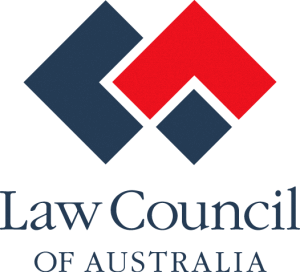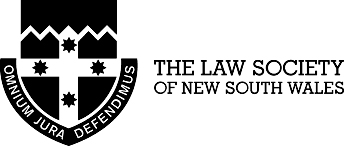- TAX LAWYERS, TAX ADVISORY, TAX COMPLIANCE, EXPATS - SYDNEY, BRISBANE, MELBOURNE, CANBERRA
- 1300 334 518
- admin@waterhouselawyers.com.au
Don’t get caught out by an ATO default assessment
Tax Audit
Don’t get caught out by an ATO default assessment
A default assessment is an assessment of income tax issued to you by the ATO, based on the amount of tax that the ATO thinks you should pay.
The ATO can issue a default assessment in two situations:
- Where you have not lodged a return, notice or another document that you must to lodge.
- Where you have lodged a return, but the ATO is not satisfied by it.
It has this power under section 167 of the Income Tax Assessment Act 1936.
The most common type of default assessment is the first one – that is, when you have not lodged an income tax return that you must to lodge.
Before the ATO issues a default assessment, it will usually contact you to give you the opportunity to lodge for yourself.
What’s the problem with default assessments?
There are three main reasons why default assessments are bad news – and therefore, there are three very good reasons why you should lodge your own returns:
1 Penalties
If the ATO makes a default assessment against you, an administrative penalty of 75% of the tax owed under that assessment applies. If you receive more than one default assessment, then the administrative penalty for all default assessments after the first will be increased by 20%.
2 Deductions
The ATO does not have to take into account any deductions, credits, etc, that you may be entitled to when it makes a default assessment. Whilst you can fix this up and claim the amounts after the default assessment is issued, it is a more difficult process than if you had lodged your own return in the first place.
3 Possible prosecution
The ATO can prosecute you for not lodging your tax returns – this means that you can end up with a criminal conviction on your record if you don’t lodge a tax return.
The basis of a default assessment
The ATO has access to a wide range of information that it can use as the basis for a default assessment. For example:
- it can obtain information from third parties using the formal access powers granted to it under legislation. This information can be gathered from other government agencies, employers, banks, etc.
- it receives information from the Australian Transactions and Analysis Centre (AUSTRAC) about cash deposits of over $10,000 into bank accounts and about large amounts of money that come into or leave Australia.
- it can apply industry benchmarks to determine what your income is likely to have been, based on how others in your industry perform.
- it can extrapolate figures from your earlier years’ tax returns, taking into account inflation.
- it can conduct an asset betterment analysis, under which it determines how much income you would have needed to acquire the assets that you own. It can find out about your assets from insurance companies, State motor vehicle registration offices and even your Facebook or Instagram accounts.
The ATO needs to have a reasonable basis for the default assessment. This means that it cannot pluck figures from the air – if it does, the assessment will not hold up in court. However, given the large amount of information that the ATO can access, it is very unlikely to randomly pick a number for your assessment. Further, an error in the calculations that underpin the default assessment is not enough for the assessment to be invalid. All of this means that it can be very difficult to challenge the validity of a default assessment (but you can still challenge a valid default assessment).
Default Assessment Warning
Before the ATO issues a default assessment, it will usually send you a ‘Default Assessment Warning’. This letter will give you a due date for the lodgement of your income tax return; if you do not lodge by that date or arrange an extension, the ATO will issue you a default assessment.
The Default Assessment Warning should also include a ‘Summary of your estimated taxable income’. This is a summary of the ATO’s assessment of your tax based on the information available to it. It gathers this from other parties such as your employer, bank or other government departments.
Because of the wide range of information that the ATO can access, it already knows a lot about you and your financial situation before it issues you with a Default Assessment Warning.
The summary of estimated income typically only includes income – it does not usually include any deductions or offsets that you are entitled to. This means that the amount of tax you would have to pay under a default assessment is likely to be higher than if you lodged your own tax return.
If you do not respond to the ATO’s Default Assessment Warning, then the ATO will issue you with a default assessment.
How to respond to a Default Assessment Warning
You should respond to the Default Assessment Warning by lodging your outstanding tax return. This is the only way you can stop a default assessment being issued. It is not enough to provide income and deduction information to the ATO officer – if this is all that you do, then you can still be issued with a default assessment.
The return you lodge must be reasonable. If you lodge something that is not realistic, and the ATO is not satisfied with it, then it can still issue you with a default assessment.
You don’t always get notice of a default assessment
There are some cases in which the ATO does not give notice before it issues a default assessment. For example, this can happen where:
- the ATO considers there to be a risk that you will leave the country to avoid your tax
- it looks like you are getting rid of your assets, or moving assets outside of Australia. This would make it more difficult for the ATO to recover unpaid tax from you
- where the default assessment is part of an overall strategy by the ATO, such as being issued at the same time as a departure prohibition order.
- where there is a personal safety risk to a member of the ATO’s staff, for example, where there is a tax audit that is linked to organised crime
If the ATO has issued you with a default assessment without warning, you are likely to want to object to that assessment. This should not be taken lightly – the fact that the ATO didn’t warn you about the assessment indicates that you are already seen as a high-risk taxpayer. Your next move should be carefully considered.
Administrative penalty on default assessment
If the ATO issues you with a default assessment, you will also be charged an administrative penalty that is equal to 75% of your tax liability.
[callout] Example
If you receive a Default Assessment for the 2015 income year, and the ATO considers that your taxable income is $100,000, then your total tax for that year will be $26,947.
Your penalty will be 75% of this tax – that is, a penalty of $20,479.72.[/callout]
This penalty is charged under subsection 284-75(3) of Schedule 1 to the Taxation Administration Act 1953. It can be increased by 20% if you have previously received a default assessment, or if you receive multiple default assessments at once.
It is possible that the ATO can remit some or all of the administrative penalty. However, if you don’t respond to the ATO’s Default Assessment Warning or provide an explanation as to why you haven’t lodged your returns, then the ATO is very unlikely to remit the penalty.
The ATO’s penalty letter will usually tell you if the ATO has already considered remitting the penalty in your circumstances. If it has still imposed a penalty (i.e. it has decided not to remit the penalty), then you should object to this decision if you want the penalties to be reversed.
An objection to a decision not to remit should be very detailed. It must explain exactly why the returns weren’t lodged and why you didn’t respond to the ATO’s Default Warning Assessment. You should engage an expert to help with this. This is because if the objection is unsuccessful, the only way you can have it looked at again is by appealing to the Administrative Appeals Tribunal.
Default assessment or criminal charges?
The ATO can prosecute you for not lodging outstanding tax returns. This means that it has a choice whether to prosecute you or issue you with a default assessment.
There are a number of situations in which the ATO is more likely to issue a default assessment than pursue criminal charges:
- If the ATO believes there is a risk that you will leave Australia, or move your assets out of Australia. If this is the case, then you may be issued with a departure prohibition order at the same time as the default assessment is issued, and the ATO may apply to the court to freeze your assets.
- If the ATO believes it needs to raise the tax debt so that it can start debt recovery action against you. This is because, once the default assessment is issued, the tax debt becomes due and payable. On the other hand, if the ATO prosecutes you for non-lodgment, then your tax isn’t due until you have actually lodged your returns.
- If you’ve been prosecuted for non-lodgment, but you still haven’t lodged your returns.
What to do if you don’t agree with the default assessments
If the ATO issues you with a default assessment and you do not agree with it, you have a couple of options.
Firstly, you can contact the officer who was responsible for issuing the default assessment. Their details should be on the Default Assessment Warning Letter. If you don’t receive this letter, or you cannot find it, you can call the ATO and ask which ATO officer made the decision to issue the default assessment.
You should explain to them why you didn’t lodge your tax return and why you didn’t respond to their letter. You should ask them to review their decision and offer to provide them with the information they need to be able to do this. For example:
- Can you show that the amounts the ATO treated as income are not actually income?
- Can you provide evidence of deductions or tax offsets that you are entitled to?
You may want to seek some professional assistance during this step. If you’ve received a default assessment, then the chances are that your tax is not straightforward. Once you get to this point, it can be really helpful to have an expert to review your situation and communicate with the ATO on your behalf.
If the ATO officer accepts the information you have provided, then they make adjustments to your tax return. They may also be open to discussing a remission of some or all of the 75% administrative penalty.
If the matter is more complicated, or the ATO officer is not able to adjust your tax return, then you will need to lodge an objection. This would be necessary where, for example, there are questions about how the law applies to an amount received by you, or where the ATO will not accept your version of the facts in relation to those amounts.
Objecting to a default assessment can be very difficult. This is because it is up to you to show what the correct amount of tax should be – not just to show that the amount in the ATO’s default assessment is excessive. You should get help from a tax disputes expert to make sure that you are in the best position possible for a positive outcome.
Case Study
Some of the facts have been changed to allow for a simpler explanation.
Justin works for an offshore mining company. His typical work roster is 4 weeks overseas, then 4 weeks at home in Perth, Australia.
For a number of reasons, Justin didn’t have exact details of his offshore income or how much tax his employer had been paying in the countries in which he works. Because of this, he hadn’t lodged his 2015 tax return – he didn’t have enough information, and he didn’t want to make any mistakes in his tax return.
The ATO sent a Default Assessment Warning to Justin on 3 October 2016. The letter stated that the ATO is aware that Justin is receiving money from overseas into his Australian bank account. Attached to the letter is a summary of estimated income based on these deposits.
The Default Assessment Warning required him to lodge his 2015 tax return by 31 October 2016. Justin was not in Australia when this letter arrived – he was away at work and didn’t return to Australia until after 31 October 2016.
When Justin returned home, he read the letter. He started trying to sort it out straight away. He engaged an accountant and he made contact with HR at work to try to track down the paperwork to help him lodge his outstanding tax return.
Unfortunately, he didn’t contact the ATO officer to let them know that he had been overseas or that he was working on resolving the issue.
On 25 November 2016, the ATO issued a Default Assessment to Justin. The Default Assessment was for taxable income of $185,000 for the 2015 income year. This was based on the information that the ATO had about amounts deposited into his account. Justin’s tax on this amount was $60,597.00.
He is also hit with an administrative penalty of $45,447.75 (which is 75% of his tax). On top of this, he received a penalty of $900 for not lodging his tax return on time, and a General Interest Charge on the overdue tax debt (calculated from the original due date of 31 October 2015).
Justin had no idea what to do, so he contacted Waterhouse Lawyers for help. From there, I was able to help him with a number of issues:
- Helping he and his accountant to obtain the documents required from his employer.
- Communicating with the ATO officer to have the default assessment revised, to take into account foreign income tax offsets (i.e. credits for tax that Justin’s employer had paid overseas) and other deductions available to Justin.
- Negotiating a full reduction of all of the administrative penalties, based on Justin’s particular circumstances.
- Negotiating other issues not directly associated with the default assessments – including a remission of all the general interest charges and the failure to lodge plan, and negotiating a payment plan so that he could pay the tax debt over an agreed period of time.
RELATED ARTICLES:
- How to ask the ATO for a remission of your general interest charge (or GIC)
- Tax Audits, Objections & Appeals
This article uses the tax calculator available at www.paycalculator.com.au to calculate the amount of tax.
Credentials
Recognition




